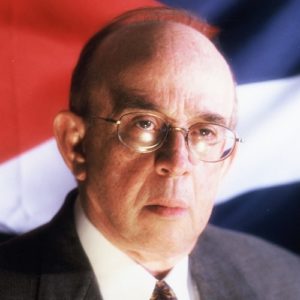
On January 24, at 11:00 in the morning, the cruisers USS Maine steam into Havana entering the narrow channel under the venerable watch of the Morro Castle and anchored in the assigned buoy number 5 close to the Spanish cruiser Alfonso XII and Ward Line Steamer City of Washington.
Secretary of the navy Richard Day and the top Spanish diplomat in Washington Dupay de Lome, arranged for a friendly visit by the Spanish cruiser Vizcaya to New York.
The first Sunday after his arrival, the Maine’s 52 -years -old captain, Charles Sigsbee, joined with a group of officers at the bullfights in Regla, where the famous matador Mazzantini (“El Torero”) performed before a roaring crowd. They were provided a ringside seat and a detachment of Spanish soldiers for protection, a wise decision given the crowd’s hostile anti-American attitude.
Capitan Sigsbee, an Annapolis graduate and Civil War veterans with extensive oceanographic expertise, was in charge of the 6,683-ton cruiser and its 354 officers and crew. Maine was commissioned on November 5, 1895, along with her sister ship, the Texas.

THE EXPLOSION OF THE MAINE
On February 15, at 9.40 pm, the Maine blew up and sank, killing two officers and 258 men. The warship had come to protect the lives of American citizens after the Spanish army officers ’riots three weeks early. Now it was resting at the bottom of the bay. What had happened?
In 1976, Admiral Hyman Rickover conducted an inquiry into the cause of the Maine’s demise. The result of his investigation, published in his book How the Battleship Maine Was Destroyed, points to an accident caused by coal spontaneously igniting in Bunker A-16 and the resulting fire spreading to the adjacent ammunition storage bunker, causing it to explode. It is well-established fact that the bituminous coal used by the American Navy was highly volatile and ignitable by accidental combustion. Before and after the Maine disaster, several U.S warship suffered from spontaneous fires in their coal bunkers, including the 8, 200- ton armored cruiser New York.
Sigmund Rothchild was eyewitness to the explosion. A passenger on the liner, City of Washington, anchored nearby, Rothchild was on deck facing the warship “I looked around and I saw the bow of the Maine rise a little, go a little out of the water. It couldn’t be more than a few seconds …then there came in the center of the ship a terrible mass of fire and explosion …the whole ship lifted out, I should judge about two feet. As she lifted out, the bow went right down.
A few days after the disasters, Spain and the U.S sent naval experts to determine its cause. The American team concluded that it had been an external explosion that detonated the magazine. The Spaniards arrived at the opposite conclusion, finding that external explosion was due to a tragic accident. By this time, the question of how it happened had become moot. The American press did not bother to seek a fair answer. They had already decided that Spain was guilty.
THE YELLOW PRESS DEMANDED WAR.
The Yellow Press reacted with incendiary headline. Two days after the Maine disaster, the Journal wrote “The warship Maine was split in two by an enemy secret infernal machine” America was aroused. The New York press broke the one million mark in sales, fueling the nation’s anger. The public’s animosity toward Spain became so intense, it precluded any alternative to that of military conflict. Upon hearing that the Maine had blown up in Havana’s harbor, William R. Hearst, owner of the Journal put it succinctly to his paper’s editor. “This means war.”










5 comentarios en “THE USS MAINE”
NY fake news..??
In relation to the persons aboard during the explosion why only white personal and officers where authorized to go offshore, during those years in the US «blacks» where secondary citizens, a few years back I asked for names and information regarding persons aboard the ship I never received an answer, that information will clear some of the questios specially the real reason of the explosion from inside the ship, was it to justified the US participation in the war of Cubans against Spain…
Enjoyed the article.
Thanks for the interesting article. You might be interested in recent information. On March 16, 1912, the wreck of the USS Maine was refloated and towed into what then were international waters (23.11.88.21 N; 82.21.3082W) where it was resunk at the depth of 3,800.00 feet. In the year of 2000, we located this wreck on the above location and registered it with the National Patrimony. PBS made a documentary using our video of investigating the wreck . In 2002, The History Channel released an episode of the documentary series Unsolved Stories, entitled «The Death of the USS Maine». In it, reputable naval experts analyze documents and other information from the file to try to determine the cause of the explosion. Specialists concluded that a fire in the coal deposits resulted from overheating was the cause of the explosion. To this was joined an identified weakness or gap in the partition that separates the coals that allowed the fire to extend to the ammunition.
Hace años solicite la informacion sobre el personal que estaba abordo durante la explosion, nombres y generales, ya que solo el personal blanco y oficiales fueron permitidos desembarcar, la pregunta es quienes y porque quedaron abordo, en esos tiempos los negros eran ciudadanos de segunda clase y existia discriminacion hacia ellos , definitivamente la explosion fue provocada internamente y no accidental, esta se trato de acusar a España para justificar la intervencion de los EEUU en la guerra ni siquiera por ayudar a la inpendencia de Cuba sino a favor de sus propios intereses…
Los comentarios están cerrados.